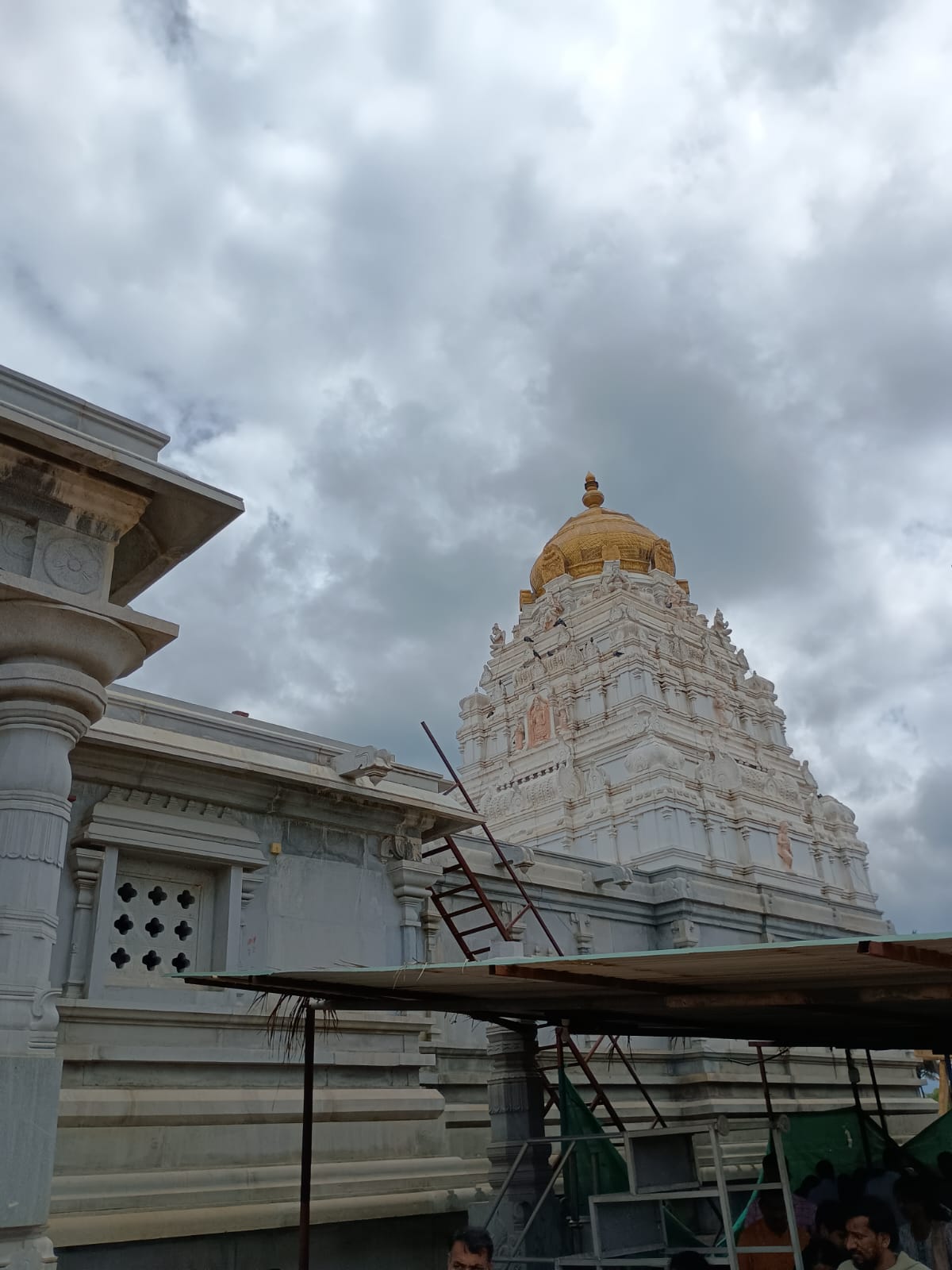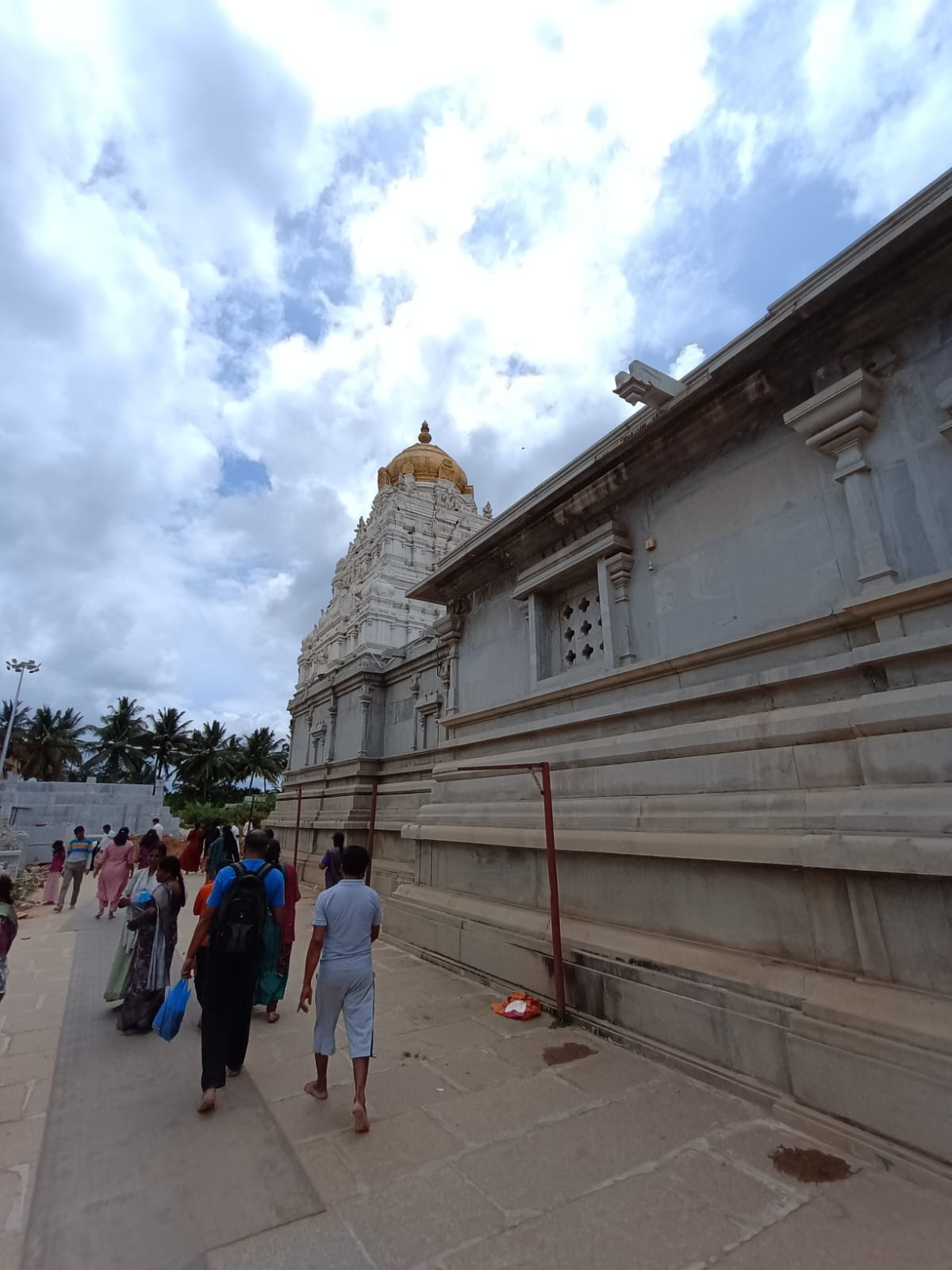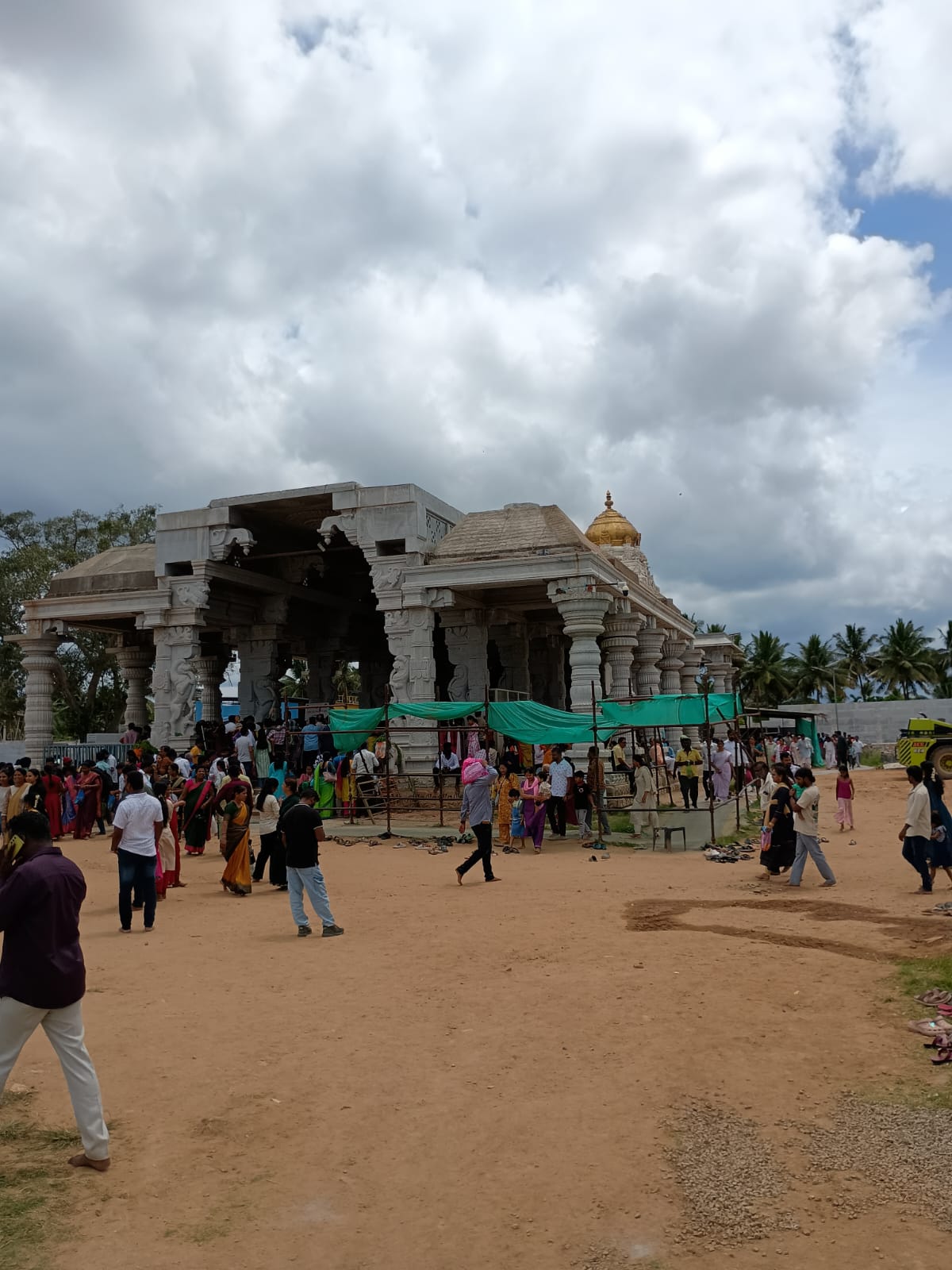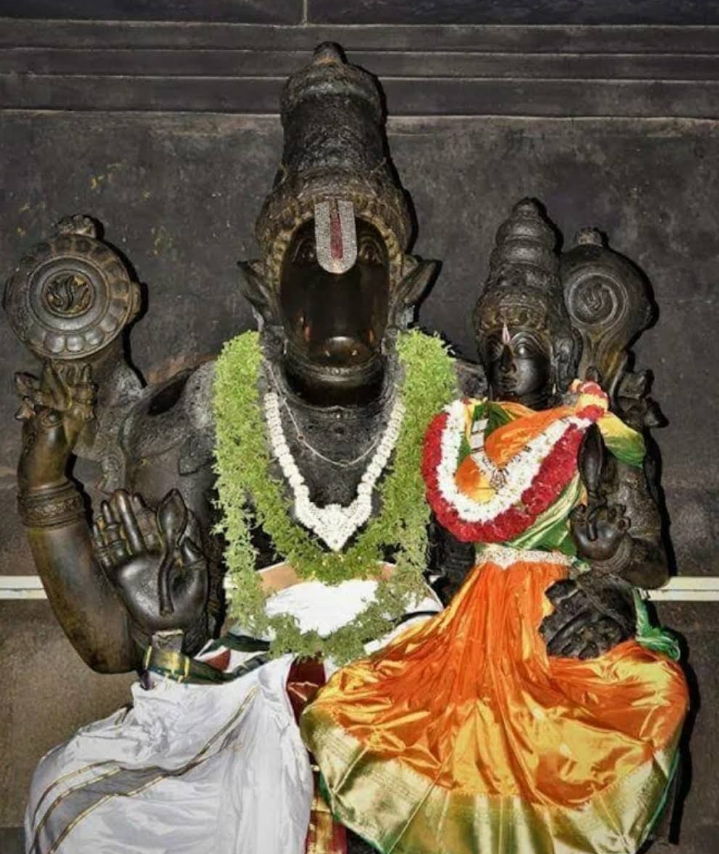Sri BhooVaraaha Swamy Temple Kallahalli
🖼️ Photo Gallery





🛕 Temple Info
Sri Bhoo Varaha Swamy Temple, nestled on the western banks of the sacred Hemavathi River in Kallahalli village, Krishnarajapete Taluk, Karnataka, is a divine abode where spirituality meets serenity. This temple enshrines a magnificent 15-foot tall black Saligrama Shila idol of Lord Varaha—the third incarnation of Lord Vishnu—seated in Sukhasana posture with Goddess Bhoo Devi (Lakshmi) gracefully on His lap.
A symbol of divine protection, peace, and prosperity, the temple exudes calmness with every breath of wind that blows through its ancient stones. The energy is warm, gentle, and powerfully reassuring, drawing thousands of devotees seeking blessings for land-related issues, home construction, and overall stability in life.
The temple’s rituals, especially the daily abhisheka with 25 divine items including milk, curd, lemon, honey, turmeric, sandal, Gangajal, and kumkum, are soul-stirring. The entire kshetra is under the divine patronage of the Mysore Brahmatantra Swatantra Parakala Mutt.
The divine idol of Sri Bhoo Varaha Swamy is sculpted from Saligrama Shila, a sacred stone from the Gandaki River. Lord Varaha is seated in Sukhasana—one leg resting on the ground, the other folded—with red eyes and lighter-shaded horns, symbolizing power and divinity.
- The upper hands hold Shankha (conch) and Chakra (discus).
- A Sudarshana Chakra is also etched on the back.
- The right lower hand is in Abhaya Mudra, while the left embraces Goddess Bhoodevi, seated gracefully on His thigh, holding a lotus and wearing a Karanda Mukuta.
- The Lord wears a majestic Kiritamukuta.
- A small idol of Lord Hanuman is sculpted below the main idol, radiating strength and devotion.
🙏 Pooja & Rituals
- Abhishekam with 25 sacred items including milk, yogurt, turmeric, sandal, lemon, Gangajal, and more.
- Mrithika and Brick Ritual: Sacred mud and consecrated bricks are taken home after pooja. One brick is placed at the temple’s designated spot, and the other at the northeast corner of the under-construction home. Daily mud worship is performed at home until the wish is fulfilled.
Devotees must consult the temple priest for proper guidance before leaving the temple with the ritual items.
Festivals
- Varaha Jayanthi, the birth star day of Lord Varaha (Revathi Nakshatra, month of Thai), is celebrated with grandeur.
- 1008 Kalasha Abhishekam marks the highlight of the festival, drawing massive gatherings and divine fervor.
💫 Importance
This sacred shrine is especially revered for:
- Resolution of land and construction problems.
- Blessings of protection, prosperity, and spiritual upliftment.
- A powerful Mrithika and Brick Ritual, performed with temple earth and consecrated bricks to be placed at home construction sites.
- Devotees perform 11 pradakshinas around the sanctum for fulfillment of prayers.
- Known as a Punya Kshetra, this site attracts seekers of divine blessings, particularly for those commencing new projects or resolving long-pending issues.
Even today, the Mud Pooja performed here is believed to invoke Lord Varaha’s protection. Devotees carry sacred mud and bricks back to their homes, perform daily worship until their desire is fulfilled, and later return to offer gratitude by immersing the mud in a Tulsi pot.
📜 History
With an antiquity tracing back over 2,500 years, the temple's spiritual lineage begins with Sage Gautama, who performed deep penance here to a Saligrama shila of Lord Varaha. Over centuries, the divine vibrations of his tapasya sanctified the land.
Later, during the Hoysala era, King Veera Ballala III rediscovered the idol under mystical circumstances. On a hunting expedition, the King witnessed a miraculous scene—a rabbit, chased by a hunting dog, suddenly turned and began to chase the dog at a mysterious spot. Sensing divine presence, the king ordered the area to be excavated, leading to the discovery of the majestic Pralaya Varaha Swamy idol. He built the temple and initiated regular poojas, the legacy of which continues today.
An inscription dated 1334 CE in Devanagari script still stands in front of the temple, silently bearing witness to this legend.
The temple has stood the test of time, surviving multiple floods of the Hemavathi river. What we see today is a simple yet strong stone structure with a garbha griha and mandapa, holding within it the awe-inspiring idol of Lord Varaha.
Years later, Sri Venkataramaiah, a devout local, inspired the revered Parakala Swamiji to revive and preserve the temple. Today, the temple is under the spiritual care and administration of the Parakala Mutt.
🪔 Pooja Timings
| Days Morning Hours Evening Hours | ||
| All Days | 9:30 AM – 1:30 PM | 3:30 PM – 7:00 PM |
🚌 Transport Options
- Bangalore: 150 km
- Mysuru: 60 km
- Mandya: 55 km
- KR Nagar: 26 km
- Hassan: 98 km
- KRS Dam / Gopalakrishna Temple: Nearby pilgrimage locations
By Road:
Accessible via Mysuru–Pandavapura–Chinnakurali or via Melukote. Private vehicles or shared taxis from nearby towns are convenient.
By Train:
Mandya is nearest station
By Air :
Mysore and Bengaluru Near Airports
🏙️ Nearby Cities
Bangalore: 150 km
Mysuru: 60 km
Mandya: 55 km
KR Nagar: 26 km
Hassan: 98 km
MytempleMypride Reflection
Authored by MyTempleMyPride, with insights from local devotees, personal exploration, and references from the official temple website